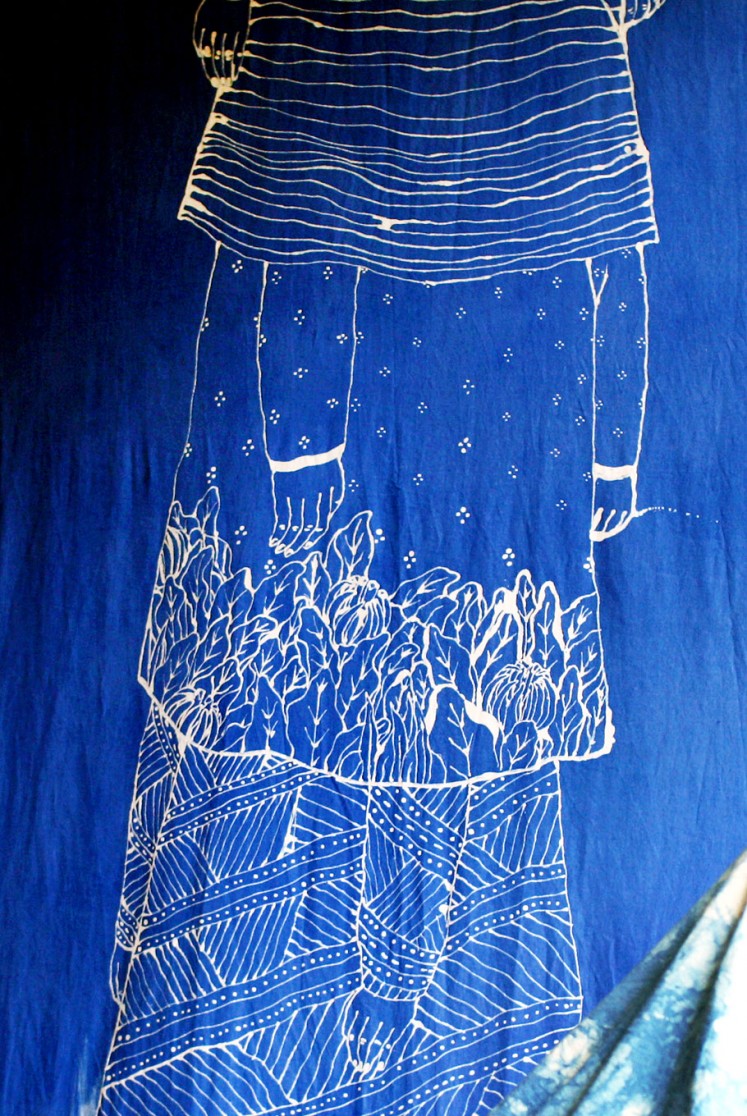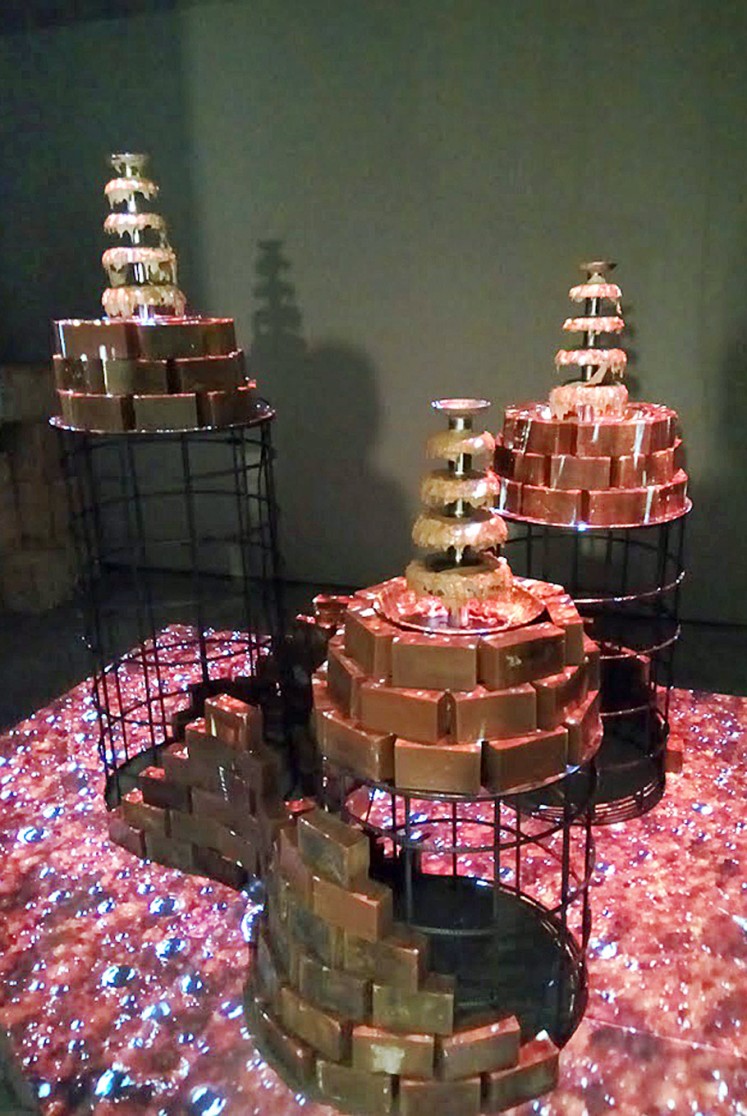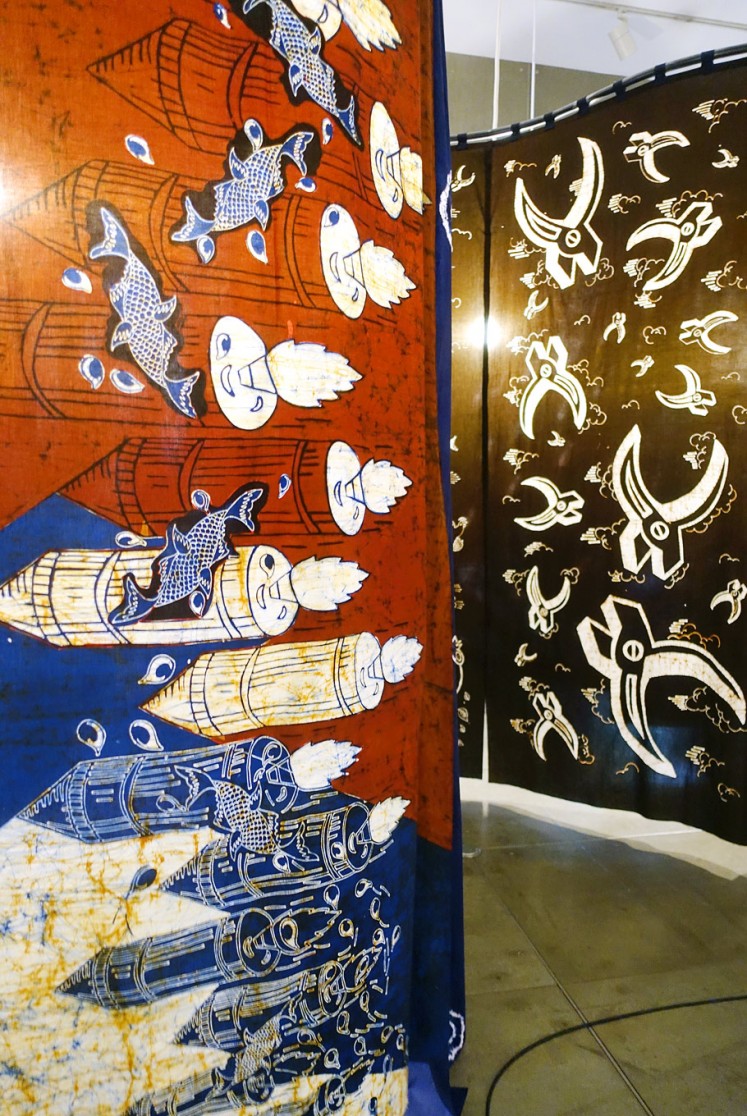Popular Reads
Top Results
Can't find what you're looking for?
View all search resultsPopular Reads
Top Results
Can't find what you're looking for?
View all search resultsPatterns of meaning: Indonesian batik and contemporary art
Change text size
Gift Premium Articles
to Anyone
F
our Indonesian artists/groups found inspiration for their contemporary work, now on show at the Jim Thompson Art Center in Bangkok, Thailand, from Indonesia’s batik traditions.
The “POLA” exhibition – jointly organized by the Jim Thompson Art Center, Danar Hadi Museum in Surakarta, Central Java and Yogyakarta-based artist-curator Mella Jaarsma — showcases the intersection between traditional batik from the Danar Hadi Museum Collection and the commissioned works of Indonesian contemporary artists.
The show denotes the development and evolution of batik and its production as well as its understanding of conforming to the spirit of the times.
In this sense, the artists not only present changes in motifs and philosophies at the exhibition, which runs until Feb. 28, but also reveal enlightening facts.
Restu Ratnaningtyas, for instance, made her 3-D installation based on her findings in the hamlet of Laweyan in Surakarta where it is the women who steer the batik home industry — quite contrary to the usual assumption that women are merely laborers in the production, applying the wax on the cloth.
“Successful women here are called Mbok Maseh. Every Mbok Maseh runs and controls her own home industry and has the authority to make decisions regarding both her business and her household,” said the 37-year-old artist.
Uniquely, the title Mbok Maseh will be passed down to their daughters, thus ensuring continuity as the drivers of economic life here.
Based on her research, Restu — who studied art from 2000 to 2003 at Jakarta State University and who primarily works in video art, watercolor, painting, and installations, with a focus on daily life — created Re-growing: Hierarchy, a 3-D installation of dresses that are piled up. It was made using cotton, indigo, synthetic color and tapioca.
“I did the batik myself,” she revealed. Restu used the same traditional batik processes as the women in Leweyan, from boiling the natural dyes in her kitchen, creating the design and applying the hot wax to the cloth with a canthing (a pen-like tool used in making batik).
Regrowing Hierarchy by Restu Ratnaningtyas (Jim Thompson Art Center, Danar Hadi Museum and Mella Jaarsma/File)Another angle is taken by the artist group Ace House Collective, a collective of 11, founded in 2010, with the artistic vision of addressing the role and function of contemporary art in society today. Traditionally heavy in philosophical and symbolic meaning, today’s motifs and characteristics in batik cloth tend to be more design-inspired.
Examining such a process is the sculpture Fervent Base that uses a chocolate fountain machine, batik wax, paraffin and iron techniques. It also comes with a single channel video installation.
Ace House Collective is active in the field of youth and pop culture and has 11 members. They generate projects that use the idea of a fictional institution as a methodology to represent art forms and engaging communities.
Fervent Base by Ace House Collective (Jim Thompson Art Center, Danar Hadi Museum and Mella Jaarsma/File)Similarly, Eldwin Pradipta engages in changing batik in Bandung, a city with a colonial history, where recent developments have undermined traditional values.
A follow-up on two previous works, the 28-year-old artist re-examines the position of batik in Bandung as a commodity and as an element of local identity.
Batik, which used to be imbued with philosophical values, has lost that important feature. The work presents contemporary batik motifs that are not imbued with traditional philosophy and do not have ties with collective social values.
Through three videos in Tjap Bayang (Shadow Stamp) being projected through copper stamps used in batik creations, Eldwin expresses his concern about the culture and history of the city where batik is regarded as a mere commodity.
Eldwin explores video and digital projection as a medium. For him, new media has an interesting position between high art and low art. His works often focus on the subjects of history and populism or low art in Indonesia, juxtaposed and dichotomized with objects and praxis of high art. He explores issues concerning cultural commodification and the impact of the global tourism industry.
Significant Scenarios by the artist group Cahaya Negeri (Jim Thompson Art Center, Danar Hadi Museum and Mella Jaarsma/File)Also underlining a new vision for batik is Significant Scenarios by the artist group Cahaya Negeri, which is an artists’ initiative by Doni Maulistya, Nindityo Adipurnomo and Linda Mayasari founded in 2015. They create collective art projects to redefine hope and desire in the midst of the recent complex reality and political dynamics.
At the exhibition, the group creates a huge batik structure resembling a labyrinth of batik on cotton with designs that are both “empty of meaning” and used for decoration only and batik with a cultural and historical context.
In the interior, new visual motifs combined with ornamentation, aromas, light play and leveling gimmicks involving gestures and postures of the viewers render an uplifting atmosphere.














